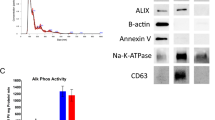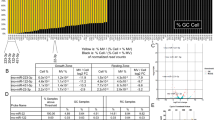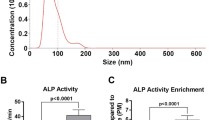Abstract.
Plasma membranes and matrix vesicles isolated from rat costochondral resting zone chondrocyte cultures contain predominantly protein kinase C alpha (PKCα) and PKCζ, respectively, and the level of PKC specific activity in these membrane fractions is regulated by 24,25-(OH)2D3 [14]. In the present study, we examined whether the effect of 24,25-(OH)2D3 on membrane PKC is via genomic mechanisms during biogenesis and through a nongenomic mechanism after the matrix vesicles are resident in the matrix. There was a dose-dependent decrease in matrix vesicle PKC specific activity and a significant increase in plasma membrane enzyme activity in cultures treated for 90 minutes with 10−9–10−7 M 24,25-(OH)2D3. However, at 12 hours, matrix vesicle PKC was stimulated, but no effect was seen in the plasma membranes, suggesting that the effect seen at 90 minutes was due to a direct action of the hormone on PKC activity in the membrane, and that the effect seen at 12 hours was due to new matrix vesicle production with altered PKC content. Neither actinomycin D nor cycloheximide inhibited matrix vesicle PKC at 30, 60, or 90 minutes, but by 12 hours, these inhibitors blocked the effect of the hormone. 24,25-(OH)2D3-dependent plasma membrane PKC was sensitive to both actinomycin D and cycloheximide at early time points, but by 12 hours, no effect of the inhibitors was seen. Monensin did not alter basal plasma membrane PKC activity or the 24,25-(OH)2D3-dependent increase, suggesting that this increase was due to translocation of cytosolic PKC rather than new membrane synthesis. Monensin did not affect matrix vesicle PKC at early time points, but it decreased 24,25-(OH)2D3-dependent enzyme activity at later times, indicating that new matrix vesicle production was blocked.
At least part of the effect of 24,25-(OH)2D3 on PKC involved phospholipase A2 (PA2). Quinacrine (a PA2 inhibitor) alone had no effect on matrix vesicle PKC, but in cultures treated for 12 hours with quinacrine and 24,25-(OH)2D3, a synergistic increase in matrix vesicle PKC was observed. Quinacrine caused a time-dependent decrease in matrix vesicle PKC and a dose- and time-dependent increase in plasma membrane PKC when incubated directly with the membranes, supporting the hypothesis that PA2 plays a role in the nongenomic regulation of PKC by 24,25-(OH)2D3. Experiments using anti-isoform specific antibodies showed that 24,25-(OH)2D3 modulated the distribution of PKCα, β, and ζ between the plasma membrane and matrix vesicle compartments via translocation and new PKC synthesis. Thus, the data support the hypothesis that 24,25-(OH)2D3 regulates matrix vesicles through two pathways: a genomic one at the stage of biosynthesis and packaging, and a second nongenomic mechanism acting directly upon matrix vesicles in the matrix. These data also indicate that matrix vesicle regulation consists of complex events with several different points of regulation.
Similar content being viewed by others
Author information
Authors and Affiliations
Additional information
Received: 11 October 1996 / Accepted: 25 April 1997
Rights and permissions
About this article
Cite this article
Sylvia, V., Schwartz, Z., Holmes, S. et al. 24,25-(OH)2D3 Regulation of Matrix Vesicle Protein Kinase C Occurs Both During Biosynthesis and in the Extracellular Matrix. Calcif Tissue Int 61, 313–321 (1997). https://doi.org/10.1007/s002239900341
Published:
Issue Date:
DOI: https://doi.org/10.1007/s002239900341




